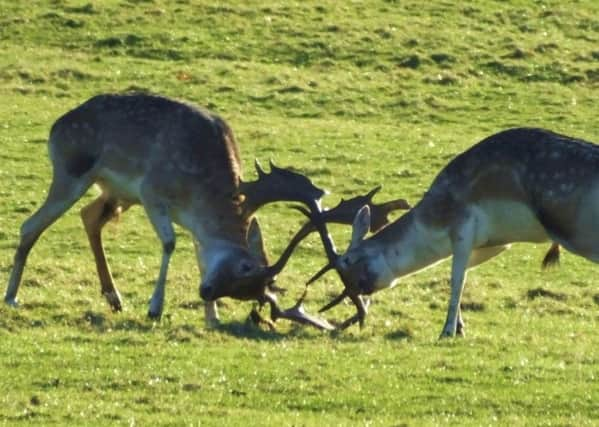Wild side - Oh deer! We're stuck in a rut


You may recall the Peak District ‘deer watches’ we organised (red deer at Big Moor and both red and fallow deer at Chatsworth, for beginners) held with deer expert Andy Alder. The latter were to catch the key part of the deer ‘rut’, the annual cycle of males displaying and mating.
This spectacular process begins late September and tails off into mid-November.
Advertisement
Hide AdAdvertisement
Hide AdBoth fallow deer and reds behave similarly in terms of seasonality and timing. By late November it is, as they say, all over bar the shouting.
Males shed or cast their antlers towards the latter end of winter and the process begins again with antlers in velvet re-grown over the summer.
Fallow bucks are smaller than red stags but have rather splendid ‘palmate’ antlers.
I recently noticed some of Chatsworth fallow bucks together in small groups, in some cases at least, apart from the females.
Advertisement
Hide AdAdvertisement
Hide AdYou may recall how red deer stags round up and protect from all-comers a harem of hinds.
They roar loudly at intruding males and will, if necessary, enter serious conflict to protect mating rights. Generally, outright battle is avoided as weaker, subservient males can tell they have no chance of victory and sensibly slope off to fight another day.
Fallow bucks do things differently and have two main characteristic to their rut.
One stratagem is to select and defend a particular tree or shrub and in their excitement they give this a severe bashing with their antlers. At their chosen ‘rutting stand’ they paw the ground and wallow in mud-baths while roaring to proclaim their attractiveness and masculinity. This attracts both females to mate and rival males to be chased off.
Advertisement
Hide AdAdvertisement
Hide AdIn some cases, bucks may search out doe groups and mate opportunistically if the chance arises. During this period, the rutting bucks may stop feeding and lose condition. In some cases, they fail to recover sufficiently to last through the following winter if the weather turns bad.
If the does fail to conceive at first, they may come into season again, and this may be the case with some of the Chatsworth animals.
Certainly, as reported by Kirsty and confirmed in her photographs, the bucks were getting very frisky and were once again displaying and rutting.
Maybe the mild weather has also had something to do with late activity although it does seem that the does were not in the least bit interested!
n Professor Ian D. Rotherham, researcher, writer and broadcaster on wildlife and environmental issues, is contactable on [email protected]